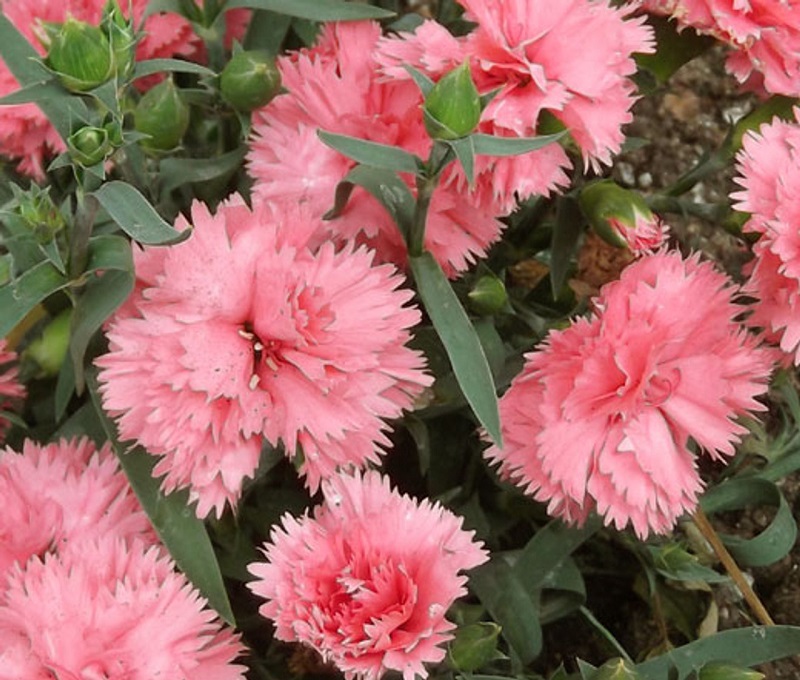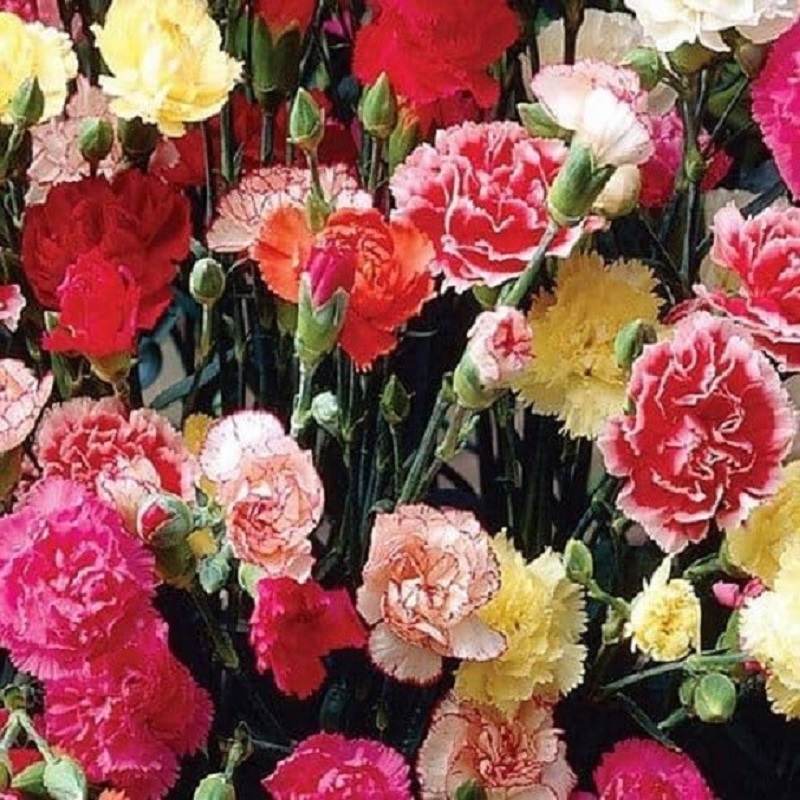Chabaud carnations, renowned for their stunning appearance and rich heritage, have captivated the hearts of gardeners and florists alike. Named after their developer, these carnations are celebrated for their vibrant colors, intricate petal structure, and exceptional versatility. This article delves into the unique characteristics, history, and cultivation of Chabaud carnations, highlighting their significance in floral design and gardening.
Definition and Characteristics
What Are Chabaud Carnations?
Chabaud carnations are a distinctive variety of carnation developed by French breeder Joseph Chabaud. These carnations are characterized by their unique flower structure and vibrant color range. Unlike standard carnations, Chabaud varieties are known for their large, full blooms and a wide spectrum of colors, from soft pastels to vivid hues.
Unique Features of Chabaud Carnations
Chabaud carnations are prized for their lush, double blooms, which often feature a frilled or ruffled appearance. The flowers can range in size from medium to large, creating a dramatic and eye-catching display. Their color variations include shades of pink, red, white, and even bi-colored patterns, offering a versatile option for various floral arrangements.

History and Origin
Historical Background of Chabaud Carnations
The Chabaud carnation was developed in the early 20th century by Joseph Chabaud, a French horticulturist known for his contributions to carnation breeding. Chabaud’s goal was to create a carnation with larger, more vibrant blooms that would stand out in floral designs. His successful breeding efforts resulted in a variety of carnations that quickly gained popularity due to their exceptional beauty and durability.
Evolution and Significance in the Floral Industry
Chabaud carnations played a significant role in the evolution of the carnation as a popular flower for both garden cultivation and floral arrangements. Their introduction brought a new level of sophistication and versatility to floral design, influencing trends and practices in the industry. Today, Chabaud carnations continue to be a sought-after choice for both professional florists and hobbyist gardeners.
Botanical Characteristics
Physical Appearance
Chabaud carnations are known for their large, full blooms that can measure up to 3 inches in diameter. The petals are often ruffled or frilled, creating a textured, elegant look. The flowers come in a variety of colors, including pink, red, white, and multi-colored patterns, making them a versatile choice for different floral arrangements.
Growth Habits
These carnations are perennial plants that typically grow to a height of 12 to 18 inches. They have a compact, bushy growth habit and produce multiple stems with numerous blooms per plant. Chabaud carnations thrive in cooler climates and well-drained soil, with a growth cycle that spans from late spring to fall.
Cultivation
Climate and Soil Requirements
Chabaud carnations prefer a cool climate and well-drained soil with a slightly acidic to neutral pH. They grow best in full sun but can tolerate partial shade. Soil preparation should include the addition of organic matter to improve drainage and fertility.
Planting Techniques
Plant Chabaud carnations in the spring after the last frost. Space plants about 12 inches apart to allow for their mature size and ensure good air circulation. Prepare the soil by incorporating compost or well-rotted manure. Sow seeds or plant nursery-grown seedlings at a depth that matches their root ball.
Care and Maintenance
Regular watering is essential, particularly during dry periods, but avoid overwatering to prevent root rot. Fertilize the plants every 4 to 6 weeks with a balanced, water-soluble fertilizer to support robust growth and blooming. Deadhead spent flowers to encourage continuous blooming and reduce the risk of disease. Monitor for pests and diseases and address issues promptly.
Popular Varieties
Overview of Notable Chabaud Carnation Varieties
- ‘Chabaud Pink’: Features soft pink blooms with a delicate fragrance, perfect for romantic arrangements.
- ‘Chabaud Red’: Offers bold, vibrant red flowers that add a striking contrast to floral designs.
- ‘Chabaud White’: Known for its pure white blooms and elegant appearance, ideal for formal events.
Pests and Diseases
Common Issues Faced by Chabaud Carnations
Chabaud carnations can be susceptible to pests such as aphids, spider mites, and whiteflies. They are also prone to fungal diseases like powdery mildew and rust, especially in humid conditions.
Prevention and Treatment Strategies
Prevent pests by maintaining good plant hygiene and spacing plants adequately for air circulation. Use insecticidal soap or neem oil to manage pests organically. For fungal diseases, avoid overhead watering and ensure proper air circulation. Apply fungicides if necessary and consider integrated pest management (IPM) practices for comprehensive care.

Uses and Benefits
Ornamental and Aesthetic Uses
Chabaud carnations are highly valued for their ornamental qualities, making them a popular choice for floral arrangements, bouquets, and garden displays. Their large, full blooms add elegance and sophistication to any setting, from weddings to everyday decor.
Environmental Benefits
These flowers attract pollinators such as bees and butterflies, supporting garden biodiversity. Their adaptability to various soil types also contributes to soil health and helps prevent erosion.
Commercial and Agricultural Uses
In the floral industry, Chabaud carnations are prized for their long-lasting blooms and versatile appearance. They are widely used in floral shops and greenhouses, where their vibrant colors and full flower heads make them a favorite among florists and gardeners.
Cultural Significance
Symbolism and Meanings
Chabaud carnations symbolize admiration, love, and distinction. Their vibrant colors and abundant blooms convey messages of appreciation and joy, making them a popular choice for celebrations and special occasions.
Chabaud Carnations in Art and Literature
The elegant appearance of Chabaud carnations has inspired various artworks and literary references. Their role in representing beauty and affection continues to captivate artists and writers.
Festivals and Celebrations
Chabaud carnations are often featured in flower festivals and garden shows, where their vibrant blooms are showcased in elaborate displays. These events celebrate the beauty and versatility of Chabaud carnations and highlight their role in horticulture.
Tips for Growing and Arranging Chabaud Carnations
Techniques for Growing Chabaud Carnations
To ensure successful cultivation, plant Chabaud carnations in well-drained soil and provide regular care, including proper watering and fertilization. Monitor for pests and diseases to maintain plant health.
Best Practices for Arranging Chabaud Carnations
When arranging Chabaud carnations, consider the overall balance and visual appeal. Use floral foam or a vase with a narrow opening to support the stems and create a cohesive look. Combine with complementary flowers and foliage for a stunning display.
Conclusion
Chabaud carnations offer a perfect blend of beauty, versatility, and elegance, making them an excellent choice for both floral arrangements and garden displays. Their vibrant colors and large, full blooms enhance any setting, adding a touch of sophistication and charm. Embrace the elegance of Chabaud carnations and enjoy their rich presence in your floral designs and garden projects.
